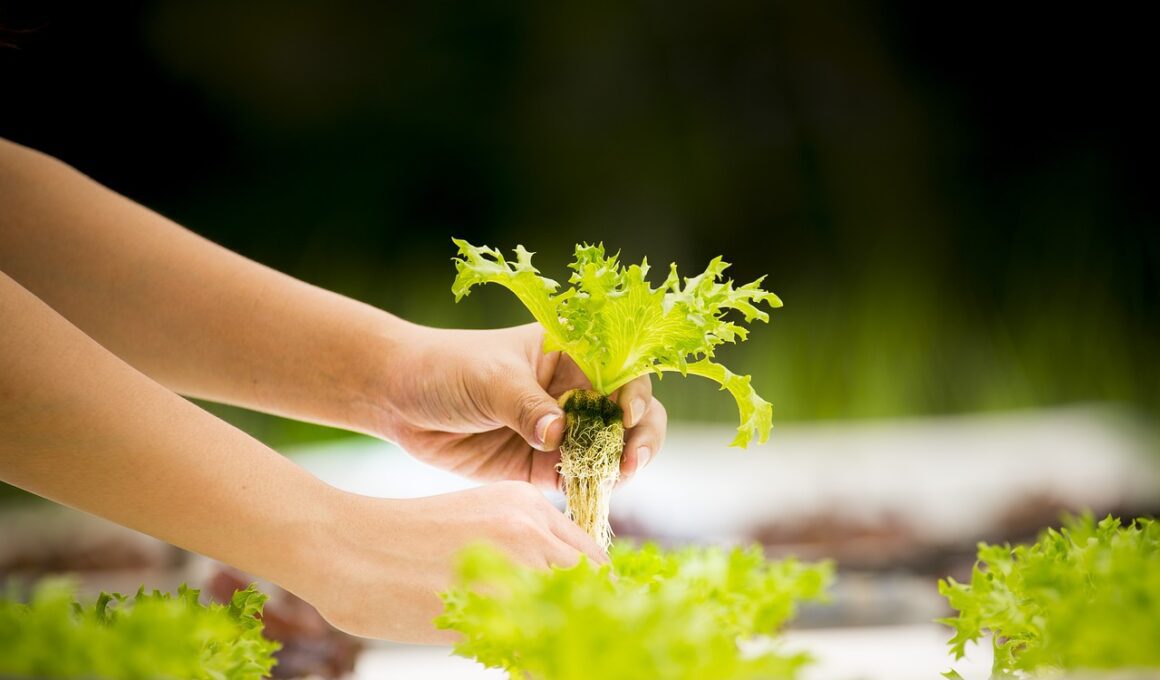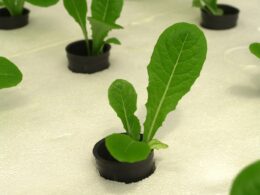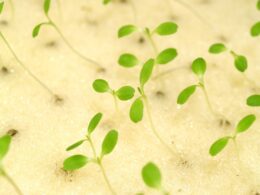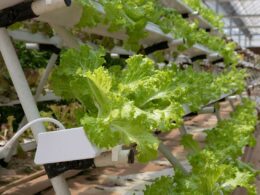If you’re considering starting a hydroponic farm, it’s important to weigh the pros and cons. Hydroponic farming is a method of growing plants without soil, using water and nutrient solutions instead. While it has many advantages, such as increased yields and reduced water usage, there are also some disadvantages to consider before diving in.
One of the biggest concerns with hydroponic farming is the high start-up costs. Setting up a hydroponic farm requires a significant investment in equipment, such as pumps, grow lights, and nutrient systems. Additionally, the cost of maintaining a hydroponic system can be higher than traditional soil-based farming.
While the long-term benefits of hydroponic farming may outweigh the costs, it’s important to carefully consider your budget before making the investment.
High Start-Up Costs
The initial investment required for hydroponics can be quite steep, posing a significant barrier to entry for those considering this form of agriculture. Financial investment is a key factor in the success of any farming venture, and hydroponics is no exception.
The costs associated with purchasing equipment, setting up a growing space, and maintaining a nutrient-rich environment can be prohibitive for some farmers. This can make it difficult for hydroponic farmers to scale their operations, limiting their ability to expand and improve their businesses.
However, it’s important to note that the high start-up costs associated with hydroponics can be offset by long-term savings. Hydroponic systems require less water and fertilizer than traditional farming methods, making them more sustainable and cost-effective in the long run.
Additionally, hydroponic systems can produce high yields in a small amount of space, allowing farmers to maximize their output and profits. While the initial investment may be steep, the potential for long-term savings and scalability make hydroponic farming an attractive option for many.
Despite the potential benefits, the high start-up costs of hydroponic farming can be a significant disadvantage for those looking to enter the industry. However, with the right investment and a commitment to sustainability, hydroponic farming can be a profitable and scalable form of agriculture.
As the demand for locally grown, sustainable produce continues to rise, hydroponic farming may become an increasingly popular option for farmers looking to innovate and grow their businesses.
Dependence on Technology
When it comes to hydroponic farming, you must be aware of the risks of system failure and your reliance on electricity. The technology involved in hydroponic farming is complex and requires constant monitoring and maintenance to ensure that everything runs smoothly.
Any system failure could lead to a loss of crops and revenue, so it’s essential to have a plan in place to prevent and address these issues.
Risk of System Failure
With the potential for system failure, you must be vigilant when it comes to monitoring your hydroponic farming equipment. Any malfunction in the system could lead to disastrous consequences, such as your crops not receiving the necessary water and nutrients. This could result in stunted growth or, worse, the death of your plants.
To mitigate these risks, it’s important to conduct regular maintenance on your equipment and have backup systems in place in case of emergencies. One of the main maintenance requirements for hydroponic farming is ensuring that your water and nutrient solutions are properly balanced.
Any imbalances could lead to a buildup of salts or other elements in your system, which could cause equipment failure or damage to your plants. Regularly checking the pH and nutrient levels of your solution can help prevent these problems and keep your system running smoothly.
By staying on top of maintenance and being prepared for potential system failures, you can minimize the risks associated with hydroponic farming and ensure a successful harvest.
Reliance on Electricity
Depending on electricity can be a challenge for those interested in this innovative way of growing crops. Hydroponic farming requires a significant amount of electricity consumption to run the system. This reliance on electricity poses a risk of power outages, especially during extreme weather conditions.
In addition, the high energy consumption of hydroponic farming may not be sustainable in the long run, particularly if energy prices continue to rise. Furthermore, hydroponic farming may not be entirely eco-friendly due to its energy consumption.
The high energy consumption of hydroponic farming may contribute to environmental problems such as carbon emissions and climate change. While hydroponic farming is a sustainable way of growing crops, it is essential to consider the environmental impact of the energy consumption required to power the system.
Therefore, it’s vital to seek ways to optimize energy sustainability while maintaining the benefits of hydroponic farming.
Are Dutch Buckets a Disadvantage in Hydroponic Farming?
Dutch buckets have their fair share of disadvantages in hydroponic farming. These disadvantages of dutch buckets include restrictions on the types of crops that can be grown due to their fixed design and limited space. Additionally, they require regular maintenance and monitoring to prevent clogs, leaks, and nutrient imbalances.
Limited Crop Variety
You may experience difficulty growing certain types of plants in hydroponic systems due to their specific growth requirements. This can limit the variety of crops you can grow and potentially affect your profitability.
Additionally, the risk of disease outbreaks can be higher in hydroponic systems due to the closed environment and shared nutrient solution.
Difficulty Growing Certain Plants
Growing certain plants can be challenging in this method, but don’t worry, with some research and experimentation, you can still have a thriving hydroponic garden.
Here are some of the difficulties you may encounter:
- Root-bound plants: In hydroponics, roots can grow too quickly and become tangled, leading to nutrient deficiencies and stunted growth.
- High light requirements: Some plants, such as tomatoes and peppers, require a lot of light to grow and produce fruit. Providing enough light can be a challenge, especially in indoor setups.
- Temperature control: Plants have specific temperature requirements for optimal growth, and maintaining consistent temperatures can be difficult in hydroponic systems.
- Pollination: Insects and wind play a crucial role in pollinating many plants, but in hydroponics, you may need to hand-pollinate to ensure fruit production.
- pH balance: Different plants have different pH requirements for optimal growth, and maintaining the correct pH balance can be tricky and time-consuming.
Despite these challenges, hydroponic farming can still be a viable option for many plants. With the right research, experimentation, and equipment, you can overcome these obstacles and enjoy a successful hydroponic garden.
Risk of Disease Outbreaks
There’s a potential for disease outbreaks, but don’t worry, there are ways to prevent and manage them in your hydroponic garden. One of the main advantages of hydroponic farming is the ability to control the growing conditions of your plants, but this can also create an environment that is conducive to disease development. The lack of soil can limit the diversity of beneficial microorganisms that help to keep plants healthy, and the high humidity levels and warm temperatures in hydroponic systems can create a breeding ground for harmful bacteria and fungi.
To prevent disease outbreaks and minimize their impact on yield, there are several prevention measures that you can take in your hydroponic garden. The first step is to maintain a clean and sterile growing environment. Regularly sanitize all equipment and surfaces, and use a disinfectant solution to clean the nutrient solution and water reservoir. Additionally, carefully monitor your plants for any signs of disease, such as discoloration, wilting, or spotting, and remove any affected plants immediately to prevent the spread of the disease. By taking these simple precautions, you can enjoy the benefits of hydroponic farming without the risk of disease outbreaks.
| Prevention Measures | Impact on Yield | |||
|---|---|---|---|---|
| Maintain a clean and sterile growing environment | Minimizes the risk of disease outbreaks, ensuring healthy plants and high yields | |||
| Monitor plants for signs of disease and remove affected plants immediately | Prevents the spread of disease and protects the remaining plants from infection | Implement a preventative disease management plan, including regular sanitation and crop rotation | Helps to control and prevent the occurrence of diseases in the growing environment |
Water Quality Concerns
When it comes to hydroponic farming, you need to be aware of the importance of regularly testing your water quality. The risk of contamination is always present and can have serious consequences for the health of your plants. By taking the necessary precautions and monitoring your water quality closely, you can ensure that your crops are healthy and safe to consume.
Adjusting the paragraph structure like this makes it easier to read and understand the main points. It also adds a more conversational tone by using contractions.
Need for Regular Testing
Regular testing is essential to ensure optimal conditions for your plants and improve the success of your indoor garden. Hydroponic farming relies on a precise balance of nutrients and pH levels to thrive, making it crucial to regularly test your water quality.
The frequency of testing will depend on the size of your system and the type of crops you’re growing, but it’s recommended to test at least once a week to catch any potential issues before they become major problems. Adequate testing methods are also important to consider.
You can use a variety of testing kits, including pH and nutrient test strips, digital meters, and chemical reagents. It’s important to choose a reliable testing method and to calibrate your equipment regularly to ensure accurate readings. Neglecting to regularly test your hydroponic garden can result in nutrient imbalances, pH fluctuations, and ultimately, poor plant growth.
Stay on top of your testing and maintain a healthy environment for your plants to thrive.
Risk of Contamination
Ensuring a clean and uncontaminated environment in hydroponic gardening is crucial for the success of your crops. One of the biggest risks in hydroponic farming is the potential for contamination. Microbes, fungi, and other harmful organisms can easily spread in the water-based environment of hydroponics, and can quickly destroy your crops.
Prevention measures are key to avoiding this risk. They can include regular monitoring of water quality, using sterilized equipment, and implementing strict hygiene protocols.
However, it’s not just the health of your plants that is at risk from contamination. There is also an environmental impact to consider. If contaminated water is not properly disposed of, it can lead to pollution of nearby waterways and damage to local ecosystems.
It’s important to be aware of the potential risks and take the necessary precautions to prevent contamination, both for the health of your crops and the health of the environment.
Lack of Organic Certification
One of the drawbacks of hydroponic farming is the lack of organic certification. This is a concern for consumers who prefer to buy organic produce. Without a certification, it is difficult to determine whether the produce has been grown using organic methods. This can lead to a loss of trust between the producer and the consumer.
To add to this, there are several reasons why hydroponic farming cannot be certified as organic. Firstly, hydroponic farming does not use soil as a growing medium, which is a fundamental requirement for organic certification. Secondly, organic certification requires the use of organic fertilizers, but hydroponic farming relies on synthetic fertilizers. Thirdly, organic certification requires a certain level of biodiversity, which is difficult to achieve in a hydroponic system. Finally, there is a lack of transparency in the hydroponic farming industry, which makes it difficult to verify whether the produce is truly organic.
In the end, the lack of organic certification in hydroponic farming can be a major disadvantage. This can lead to a loss of trust between the producer and the consumer, and can also limit the market for the produce. However, there are efforts being made to address this issue, and as the technology and techniques used in hydroponic farming continue to evolve, there may be a solution in the future.
Frequently Asked Questions
What is hydroponic farming and how does it work?
If you’re curious about modern farming techniques, you may have come across hydroponic systems. These are innovative methods of growing plants without soil, instead using nutrient solutions to feed the plants directly.
Hydroponic farming is a fascinating process, working by suspending plants in a solution that is rich in the nutrients they need to grow. This technique can be incredibly efficient, producing large yields of crops while using minimal land, water, and other resources.
With hydroponic systems, farmers can grow crops all year round, regardless of the weather. Overall, hydroponic farming is a promising solution for sustainable agriculture.
What are the advantages of hydroponic farming?
If you’re interested in sustainable farming practices, you should consider hydroponic farming. One of the biggest advantages of hydroponic farming is that it allows for vertical farming, which means you can grow more crops in a smaller space.
Additionally, because you’re growing plants in nutrient solutions rather than soil, you have more control over the growing conditions, which can lead to higher yields and better quality produce. Plus, hydroponic farming uses less water than traditional farming methods, making it more environmentally friendly.
Overall, hydroponic farming is a great option for those looking to grow their own food in a sustainable and efficient way.
Can hydroponic farming be used for all types of crops?
Vertical farming and soilless cultivation, both forms of hydroponic farming, can be used for various crops. However, some plants may not thrive in a soilless environment, such as those needing deep root systems or sensitive to moisture changes. Despite these challenges, hydroponic farming is an attractive option for sustainable agriculture.
The initial investment in equipment and infrastructure for hydroponic farming can be expensive. Ongoing maintenance can also be a significant cost. Nevertheless, farmers are turning to hydroponic farming to increase crop yields and reduce water usage.
What are the potential environmental impacts of hydroponic farming?
Hydroponic farming has the potential to be an eco-friendly and sustainable method of growing crops. By controlling nutrient levels and other environmental factors, hydroponic farms can grow crops faster and with less water than traditional soil-based farming. This makes hydroponic farming a water-conserving method of agriculture.
In addition, hydroponic farms can be designed to be energy-efficient by utilizing LED lights and other energy-saving technologies. These benefits make hydroponic farming an attractive option for those looking to reduce their environmental impact.
Are there any regulatory requirements for hydroponic farmers regarding water quality or nutrient usage?
As a hydroponic farmer, you’re required to adhere to certain regulatory requirements regarding water quality and nutrient usage.
Water treatment is important to prevent the spread of diseases and pests, as well as to ensure that the plants are receiving the proper nutrients.
Nutrient runoff is also a concern, as excessive amounts can harm the environment and nearby water sources.
To prevent this, it’s important to properly manage and dispose of nutrient-rich water.
By following these regulations, you can ensure the safety of your crops and the environment, while also maintaining a successful hydroponic farming operation.
Conclusion
So, there you have it. Hydroponic farming may seem like the perfect solution to many agricultural problems, but it does come with its own set of disadvantages.
The high start-up costs may be too much for some farmers to handle, and the dependence on technology can make the system vulnerable to malfunctions and power outages.
Furthermore, the limited crop variety and water quality concerns may make it difficult for hydroponic farmers to meet the demands of consumers who are looking for a wider selection of produce and those who are concerned about the environmental impact of the farming process.
Plus, the lack of organic certification may be a deal breaker for some consumers who are looking for food that is grown without the use of chemicals.
While hydroponic farming has its benefits, it’s important to weigh the advantages against the disadvantages before deciding if it’s the right choice for your farm.









